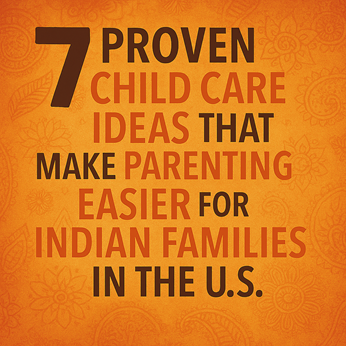Decoding Nap time for your child
Deciding when to stop your child’s afternoon naps is an important responsibility of parenting; most children are ready to give up their daily naps between the ages of 3 to 5 years. Giving up the daytime nap can be challenging not only for the child, but also for you. The decision of when a child should give up nap time should be taken with considerations of signs when the child is or is not ready.
Look for signs that your child is ready
Your child may resist naps; he/she will constantly be getting out of bed, whine endlessly about it and would not fall asleep.
There could be bedtime struggles and the child will find it difficult to sleep at usual bedtime; your child would take longer to sleep at night, will go later to bed and will wake up earlier than usual in the morning.
Most kids that are ready to give up the afternoon nap would maintain a stable mood though out the day without it. Though they may have some ups and downs in moods, they will generally be in good spirits and have enough energy from the rising to bedtime.

When your child sleeps well at night even without a daytime nap and wakes up in the morning on his/her own and is in a pleasant mood, it is an indication good that your child can be nap-free.
Look for signs that your child is not ready:
If your kid is fussy, irritable and hard to please in the evening on a nap-free afternoon, it is time to decide he/she needs the extra rest.
Look out for sleepy body language signs as eye rubbing, yawning, being especially quiet and less active and a slightly gazed look in the eyes; all these communicate that your child needs some extra rest,
When your kid goes to nap most easily during the daytime offering the least resistance, it means your child needs that extra rest during the day.
If your child dozes and falls asleep during a short drive on a nap-free day, it is best to decide he needs that extra rest and cannot give up naps.
Some over-tired children that miss the afternoon sleep may become fidgety, antsy or hyperactive.
How to make the no-nap transition easy:
Keep a sleep log and note your kid’s behavior for the day from the time he/she wakes up and then goes to bed. Observing the pattern for a week or two would put you in a position to decide whether to eliminate naps or wait to do so for some time.

Replace naps with quiet time of about 15 to 30 minutes; this break in his/her bedroom or some other non-busy area allows the child to recharge. You could provide the child with kid-friendly art supplies, puzzles, or a few quiet toys to play with to prevent boredom; do make periodic checks. The time could gradually be increased to an hour.
Do not ban naps; let the transition between naps and no naps at all be gradual. Some take about 6 months during which you should allow him/her to have a nap on some days when he/she is very tired or sleepy. If your child over 6 years starts napping again, it could mean he/she is not getting enough sleep or has a sleep disorder; discuss it with the pediatrician.
Be consistent about not only naps and quiet time, but also about the time and place of quiet time; let it be after lunch at the same designated place. If it is predictable the child will offer the least resistance and would rather look forward to it.
Lastly if your child has regular afternoon meltdowns or shows signs of sleepiness, practice putting him,/her to bed 20 minutes to an hour earlier at night.
Image Courtesy: Google
Take the next step toward your goals
Share your requirement and find the best care providers in your area
-
Looking for a caretaker’s job? Build your profile and get in touch with families in your vicinity.
-
Discover nannies, babysitters, cooks, housekeepers, pet sitters, and elder care under one roof.
-
Get all the support you need to run a successful care center.
-
Search for appropriate centers near you depending on your needs.
Care Corner Insights: Blog Library

Best Child Care Hacks for Busy Indian Moms and Dads in the U.S.
Balancing work, home, and parenting is challenging, especially for Indian parents living in the U.S. Between cultural expectations, school schedules, extracurricular activities, and household responsibilities, managing daily life can often feel overw

A Revolutionary Guide for Indian Families in California
Living in California offers incredible opportunities, but Indian families often face unique challenges—balancing cultural values, adapting to a fast-paced lifestyle, handling child care, navigating school systems, and building a strong community away

8 Powerful Secrets to Raising Happy Kids While Working Full-Time in San Diego, CA
Balancing a demanding full-time job with raising happy, emotionally secure kids isn’t easy—especially in a vibrant, fast-paced city like San Diego. But with the right strategies, you can create a joyful, connected home environment without burning out

What’s the Best Way to Find a Trustworthy Indian Nanny in Fremont, CA ?
Hiring a nanny for your family is a big decision, especially when you want someone who understands your cultural values and parenting style. If you’re looking for a trustworthy Indian nanny in Fremont, CA, here are some effective strategies to make t

7 Proven Child Care Ideas That Make Parenting Easier for Indian Families in the U.S.
Raising children in the U.S. comes with a unique blend of opportunities and challenges—especially for Indian families trying to balance cultural values, busy work schedules, and daily childcare responsibilities. These seven proven childcare ideas can

9 Must-Know Tips for Hiring a Nanny in San Jose
Finding the right nanny for your family in San Jose can feel like a huge task — especially when you want someone who is trustworthy, experienced, and a perfect match for your child’s needs. Whether you’re a first-time parent or looking to replace you

10 Revolutionary Child Care Tips Every Indian Family in California Should Know in 2025
1. Bring India Home — Every Day Your children might grow up in California, but they can still grow with India. Let Indian traditions live inside your home — evening prayers, storytelling in your native language, or cooking regional dishes together.

Deep Cleaning Your House: Room-by-Room Checklist for a Thorough Clean
A sparkling clean home isn’t just about looks—it’s about health, comfort, and peace of mind. Whether you’re prepping for a festival, hosting guests, or just tired of the clutter, a deep clean can transform your space. But where do you start? Here’s a

What are Senior Apartments? Experts Explain Independent Living for Older Adults
As we age, our needs and lifestyles evolve—but one thing remains constant: the desire for independence. Senior apartments are designed precisely with this in mind, offering older adults a living arrangement that balances freedom with comfort, safety,

Baby Sleep Problems: What is Sleep Regression and How to Handle It
If you’re a parent, you know that baby sleep is one of the greatest mysteries of life. One day your little one is snoozing like an angel, and the next day they’re suddenly waking up every hour, fussing, or refusing to nap. Before you panic, there’s a